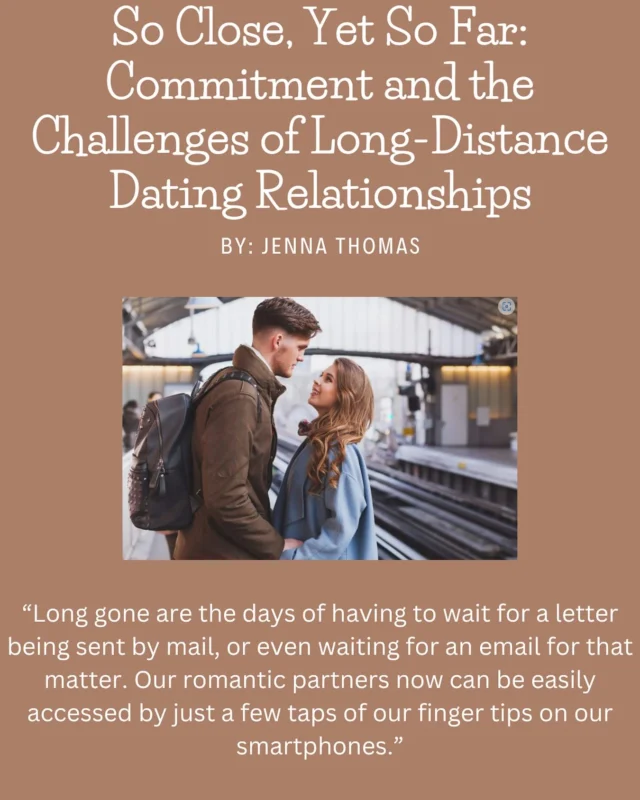Can swiping on Tinder lead to long-term romantic love? As a research team we have wondered about this idea, as have others such as the author in this New York Times article. Recently our team read a new research article entitled Swiping Me Off My Feet: Explicating Relationship Initiation on Tinder by Dr. Leah LeFebvre a communications professor at the University of Alabama.
LeFebvre (2017) investigated how people engage in relationship initiation behaviors through Tinder and highlighted how interpersonal relationship initiation, selection processes, and strategic pre-interaction behaviors are evolving through contemporary- mediated dating culture.

An online survey was conducted which included 395 participants between the ages of 18 and 34 was. LeFebvre measured 4 categories: perceptions, selection, and deletion, pre-interaction preferences, relationship initiation swiping strategies, and hookup (in or as relationship initiation). To investigate how Tinder assists in relationship formation and what implications that may have for pre-interaction relationship developmental processes the following research questions were proposed:
RQ1: Why are users selecting (or deleting) Tinder?
RQ2: What are users’ profile pre-interaction preferences?
RQ3: What motivates relationship initiation swiping strategies for Tinder users?
And because Tinder is commonly viewed as a sex app…
RQ4: What are users’ hookup experiences on Tinder?
When asked why they downloaded Tinder, the most common reason was popularity (48.3%), and many participants explained that their friends, peers, and desired social circles used the app so they wanted to experience it too. Something that sparked the curiosity of our research team was when the participants were asked why they deleted Tinder. Interestingly, the most common theme was because they were in a relationship and felt dishonest looking at it while being in a committed relationship or when their partner was seeking exclusiveness.
Our research team was also fascinated by swiping strategies. Some participants admitted they swiped right or left depending on the attractiveness of the picture or bio of the other person. Another strategy that involved standards or a particular criteria, the selective swipers, quickly dismissed people who did not meet their criteria. Others swiped right or left depending on how interesting the profile was. Some swipers used the shotgun approach, where they swiped right for everyone they came across and then filtered out the options after they received their matches.

Finally, 51.5% of participants indicated that Tinder was designed more for hookups than for dating (33.5%). This finding lead to many questions from our research team. If this app is known for initiation hookups instead of dating relationships, why are people who are looking for love utilizing the app? What happens after the hookup experience? Does that lead to anything more?
Our research team has a growing interest for technology and social media and how it plays a role on relationship formation. We spent a good amount of time during our weekly meeting discussing this article and what we could potentially do in the future to answer more of the questions we had. In today’s society, social media and technology is seeming to take over many aspects of our lives, including our process of relationship formation.
We have done research and have a lot of data about commitment (and the fear of) in emerging adult relationships. In our research Proceed With Caution; How Emerging Adults are Testing The Water in Just Talking Relationships, we found ten themes regarding why people are engaging in “just talking” relationships where there is little to no commitment. In two of the ten themes, participants said they were afraid of losing options and that they had the freedom to compare their options. With the help of technology and mobile phone apps like Tinder, emerging adults have thousands of options in the palm of their hands. They can choose to explore all of their options, find what they like and don’t like before committing to one person. In the future, we hope to learn more about how other social media outlets are impacting the dating scene and how these applications will effect future relationships. So can swiping on Tinder really lead to love? In some cases it has, but as time progresses, we think it would be interesting to see how technology will play a role in the levels of commitment in relationships and how it will impact the formation of relationships themselves, whether that be the sequence of milestones or the timing of the relationships.
Oh…and for those interested here is video of The Beatles playing the song Can’t Buy Me Love:
Some Information about Tinder
Tinder is a location-based social search mobile phone application that was founded in 2012, initially to be a social discovery platform, rather than a dating app. The application shows your first name, age, location relative to the person seeing your profile, and a few profile pictures. Users can choose the age range and the gender they are interested in meeting and the app compiles a group of people and lets the user view each person one at a time and make a decision. As the profiles show up, the user can choose to swipe their screen to the left if they are not interested in that person or to swipe to the right if they are interested. If both users swipe right on each other’s profile, they then become a match and they are free to private message one another. As of 2017, Tinder’s 50 million users (10 million daily active users) clock in 1.6 billion swipes per day, aiding 6 billion friendships, professional partnerships, and platonic relationship matches, and 26 million matches daily for those ages 18-50 (Tinder, 2017). It is clear that apps such as Tinder are starting to have an effect on the dating and mating market landscape.
References
- Sibley, D. S., Vennum A., Kahovec, A., R, Schraufnagel, H., Lupo, T., Roark, J., Wilson, H. (in preparation). Proceed with caution: How emerging adults are testing the water in just talking romantic relationships.
- LeFebvre, L. E. (2017). Swiping me off my feet: Explicating relationship initiation on Tinder. Journal of Social and Personal Relationships.
- Tinder. (2017) Tap Into a New Look on Tinder. Retrieved from: http://blog.gotinder.com/tap-into-a-new-look-on-tinder/
Discover more from Decide To Commit
Subscribe to get the latest posts sent to your email.










